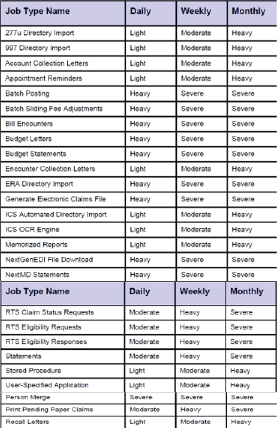Think about all the manual tasks you deal with daily - running reports, handling billing processes, and other time-consuming duties. Now, picture a world where these tasks take care of themselves while you focus on more crucial projects. This isn't a far-off dream, but rather, your future with the NextGen Background Business Processor (BBP).
Packages, jobs, and schedules may seem like unfamiliar terms, but get ready to embrace them as tools to optimize your workflow. Get ready to master your BBP, and prepare to be amazed at how indispensable it becomes.
Your Guide to Using the Brilliant BBP: Packages, Jobs, and Schedules
The BBP is like your personal assistant, taking care of tasks that normally require manual intervention. It's a whiz at scheduling tasks for automatic completion, giving you more time to focus on other projects. It's also a night owl, working overnight or over the weekend to get tasks done. So, when you start your day, you can access the results without having to lift a finger.
But how does it work? Well, the BBP uses packages and jobs. A package is like a container that holds all the jobs you want to execute for a specific schedule. A job, on the other hand, is a task that lives within the package. It's important to note that you can't schedule a job, only a package. When you schedule a package, you need to consider how long each job will take.
Now, you might be wondering, "How do I know when to schedule a package?" Well, the BBP has different categories to help you decide – severe, heavy, moderate, and light. A severe package takes two or more hours to complete, a heavy between one to two hours, a moderate between thirty minutes and one hour, and a light package takes less than 30 minutes. By using these categories, you can determine when a package should be scheduled and on which BBP server it should run.
Getting Acquainted with Your BBP: Your New Work Companion
The BBP is a versatile powerhouse, capable of handling a wide range of job loads. Whether it's light tasks like importing files or heavy ones like billing encounters, the BBP has got you covered. It doesn't stop there though – it can also run stored procedures, print paper claims, and so much more. The key to optimal performance is scheduling these tasks during off-peak hours, such as overnight or over the weekend, to ensure your system runs smoothly without any slowdowns.
The BBP efficiently handles tasks such as verifying eligibility before a patient's appointment, enabling your team to address any active or inactive responses before the patient even arrives. Additionally, it assists with importing acknowledgement and remittance files, providing essential information on whether your claim was accepted or rejected by the payer. This valuable data can then be imported and utilized to create a note on the encounter, streamlining your workflow and enhancing productivity.
 You may be wondering, "What if there are errors overnight?" The solution is right at your fingertips with the verification manager. With just a few clicks, your staff can quickly identify any errors or unsuccessful attempts and resolve them immediately. These errors can be easily filtered, carefully reviewed, and resubmitted seamlessly.
You may be wondering, "What if there are errors overnight?" The solution is right at your fingertips with the verification manager. With just a few clicks, your staff can quickly identify any errors or unsuccessful attempts and resolve them immediately. These errors can be easily filtered, carefully reviewed, and resubmitted seamlessly.
The BBP is a revolutionary tool that will transform your work processes. With its ability to automate tasks and enhance efficiency, it provides you with the invaluable gift of time to focus on your most important projects. It's like having a personal assistant who takes care of all the time-consuming tasks, allowing you to thrive in your role and achieve exceptional results.
If you're eager to learn more about the Background Business Processor, watch our on-demand webinar, Increase Efficiency and Productivity with the BBP. Our presenter provides an in-depth exploration of the BBP, offering valuable insights and strategies to empower your health center's success.
